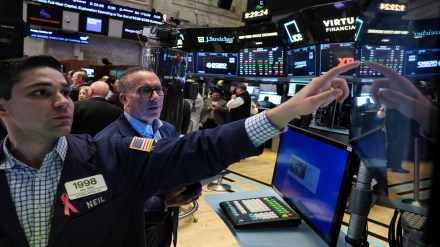By Trivesh
As the Federal Reserve gears up for a potential rate cut, the financial world is closely watching the implications for various sectors and economies. A cut in the federal funds rate, which applies to short-term borrowing between commercial banks, could signal a shift in focus from fighting inflation to addressing concerns about a slowing economy and rising unemployment. Here’s a closer look at the factors driving this decision and what it might mean for the global economy and markets.
Economic cooling and inflation control
Jerome Powell, the Chair of the Federal Reserve, has hinted at the need for rate cuts, citing a significant cooling of inflation and the labour market. Over the past year, the unemployment rate has risen to 4.3%, and inflation is gradually moving towards the Fed’s 2% target. These developments suggest that the economy may be stabilizing, making it an opportune moment for the Fed to lower rates to support continued growth without reigniting inflation.
Global economic dynamics
The decision to cut rates doesn’t occur in isolation; global economic factors play a crucial role. For instance, Japan is raising its central bank rates in response to domestic issues, creating a counterbalance in global monetary policy.
Additionally, the continuity of conflicts in regions like Russia/Ukraine and Israel/Palestine/Iran, along with political turmoil in countries like Bangladesh, has led to significant shifts in the geo-economics landscape.
These tensions contribute to a reallocation of business from strike-torn areas, potentially driving growth in more stable economies, such as India.
Furthermore, the performance of tech giants like NVIDIA is critical. NVIDIA’s quarterly results, expected soon, could have significant implications for the broader tech sector and, by extension, the overall market.
Impact on Indian markets
Interestingly, Indian markets have shown resilience in the face of potential Fed rate cuts. Despite Powell’s dovish tone, the NIFTY 50 index is nearing its 52-week high. This resilience can be attributed to strong domestic liquidity and a robust economic outlook, which have helped cushion the impact of global monetary policy changes. However, sectors like IT, auto, and realty in India could still benefit from a Fed rate cut due to increased foreign institutional investor (FII) inflows and cheaper borrowing costs.
Political and strategic considerations
The upcoming US elections also add a layer of complexity to the Fed’s decision-making process. While the Fed is supposed to operate independently, the political landscape could influence its policies. Whether it’s Trump or Kamala Harris who takes the helm, their approaches to socio-economic issues will likely impact how the Fed navigates its rate cut journey. Moreover, as the US dollar weakens and liquidity increases, there may be a shift in investment strategies, with more people hedging their cash in assets like gold and oil.
Potential impacts on the economy
A rate cut by the Fed, even if it’s a modest 0.25% or 0.5%, could have widespread effects:
Borrowing costs: Lower rates make borrowing cheaper, encouraging consumer spending and business investment. This could be a boon for sectors sensitive to interest rates, such as housing, autos, and consumer goods.
Market sentiment: Typically, rate cuts are viewed positively by financial markets. They signal a more supportive environment for growth and profitability, which can drive up stock prices and improve investor sentiment.
Global impact: While the direct impact on Indian markets may be muted due to strong domestic liquidity, a Fed rate cut could lead to increased capital inflows into emerging markets. This could strengthen the Indian rupee and boost sectors like IT and financial services that benefit from a favourable exchange rate and lower global borrowing costs.
A balanced approach by the Fed
The Fed’s approach to rate cuts is likely to be cautious and data-driven. With the recent downward revision of US jobs data and cooling inflation, a 25 basis point cut seems the most probable outcome in the September meeting. However, if the labor market shows further signs of weakness, a more aggressive 50 basis point cut could be on the table.
Regardless of the size of the cut, the Fed’s primary objective remains balancing the risks of inflation and unemployment. The journey towards lower rates will likely be gradual, with each move carefully calibrated based on incoming economic data.
What lies ahead?
As the Fed embarks on its rate-cut journey, the global economy, markets, and investors must brace for the changes that will follow. While the immediate impact of a modest rate cut may be limited, the long-term implications could be more profound. From shifts in investment strategies to changes in borrowing costs, the ripple effects of the Fed’s decisions will be felt across the financial landscape.
(Author is COO, Tradejini)
Disclaimer: Views, recommendations, and opinions expressed are personal and do not reflect the official position or policy of FinancialExpress.com. Readers are advised to consult qualified financial advisors before making any investment decision. Reproducing this content without permission is prohibited.
